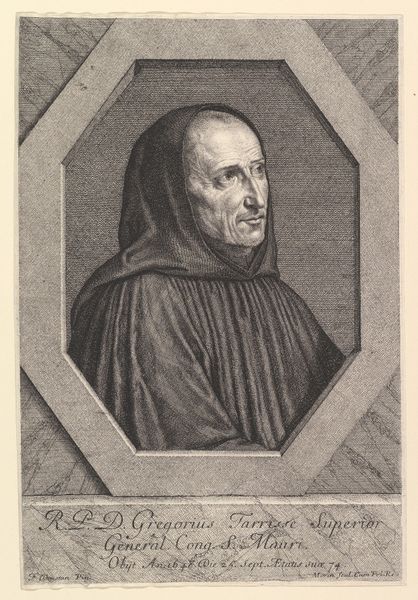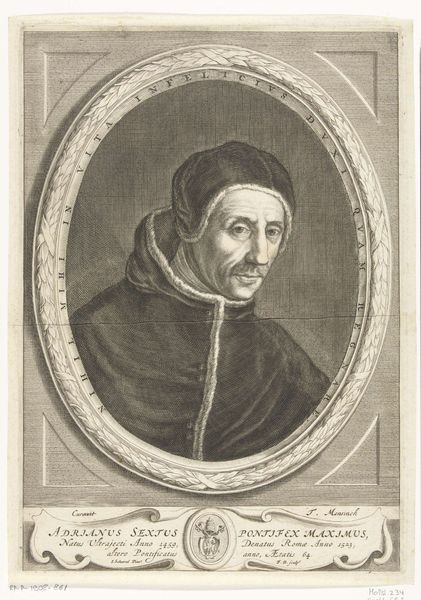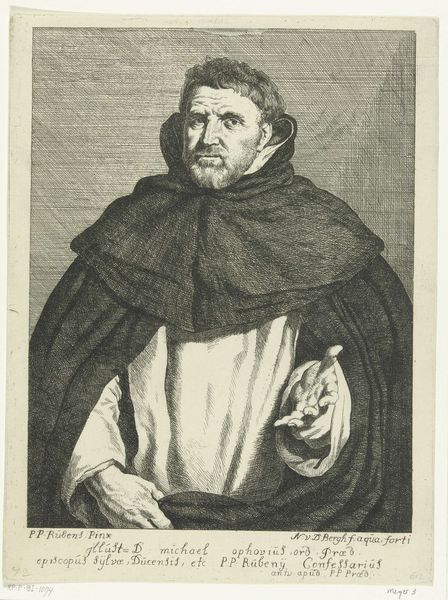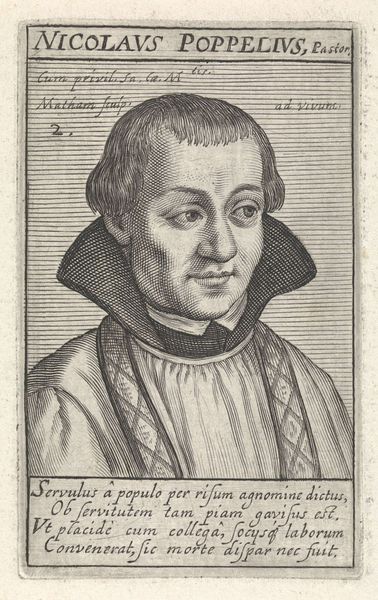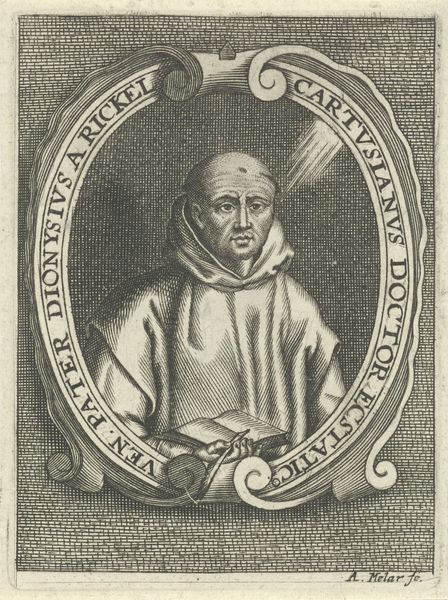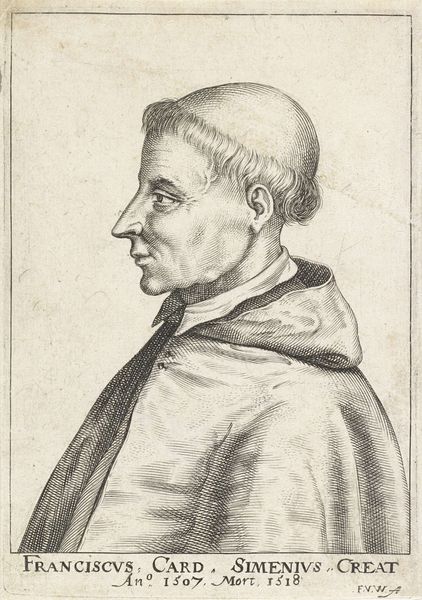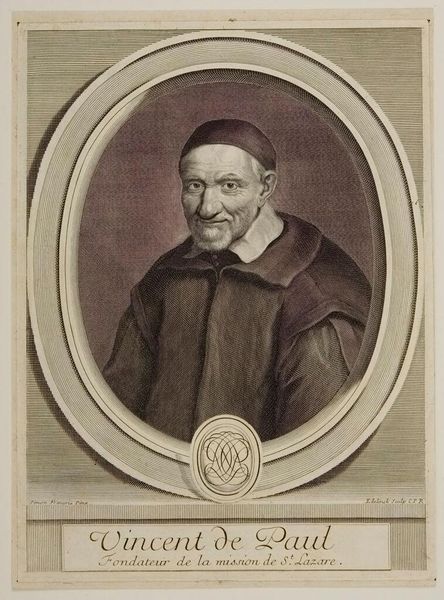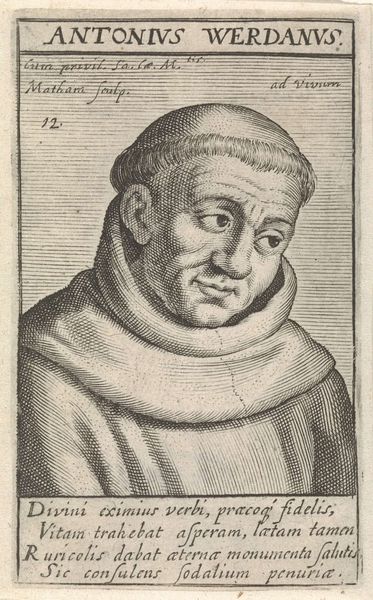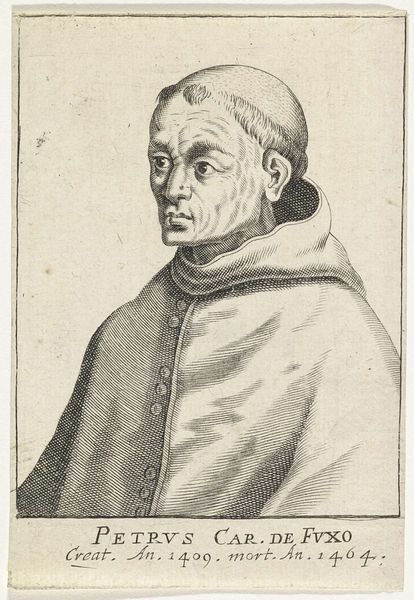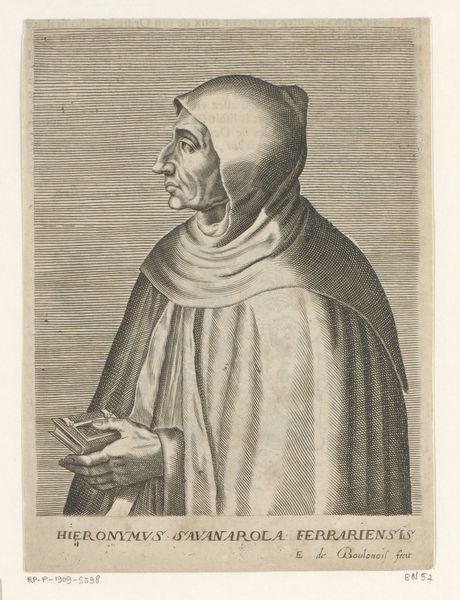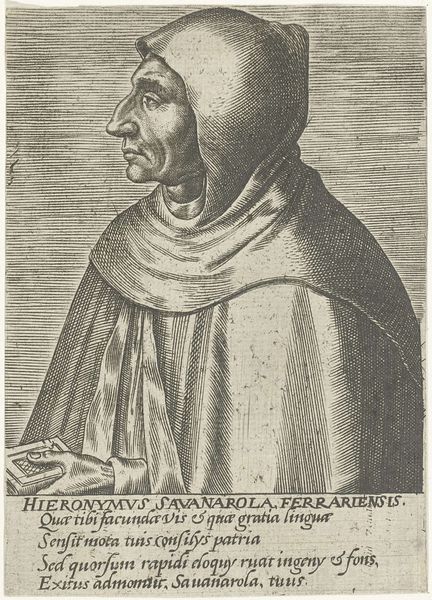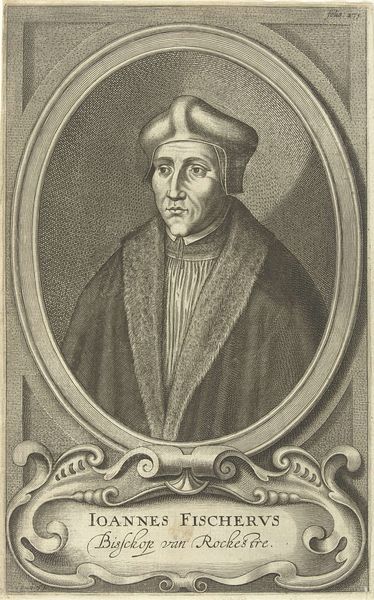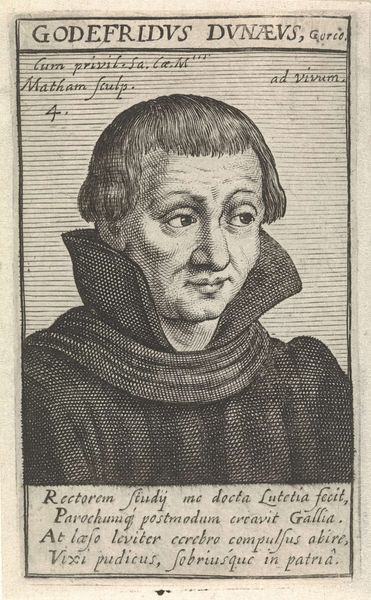
Copyright: CC0 1.0
Curator: Looking at this portrait of Gregorius Tarrisse by Jean Morin, made sometime around the mid-17th century, what’s your first impression? Editor: Somber. There's a stillness in his gaze, a life lived in contemplation etched on his face. It's like a study in the power of monochrome. Curator: I'm struck by the process itself. Morin was a master of engraving and the level of detail here—achieved through meticulous labor—really speaks to the value placed on craftsmanship. Editor: True, but consider the social context. Tarrisse was a religious figure, a leader. The portrait serves to reinforce the Church's authority, presenting him as wise and venerable. The clothing and setting all denote power. Curator: But the quality of the print, the material object itself, democratized the image, making it available to a wider audience beyond the elite circles who commissioned painted portraits. Editor: I see your point, but let’s not forget how those images were used to perpetuate very specific social hierarchies, regardless of who had access to them. Curator: An interesting tension to consider. Editor: Indeed.
Comments
No comments
Be the first to comment and join the conversation on the ultimate creative platform.
